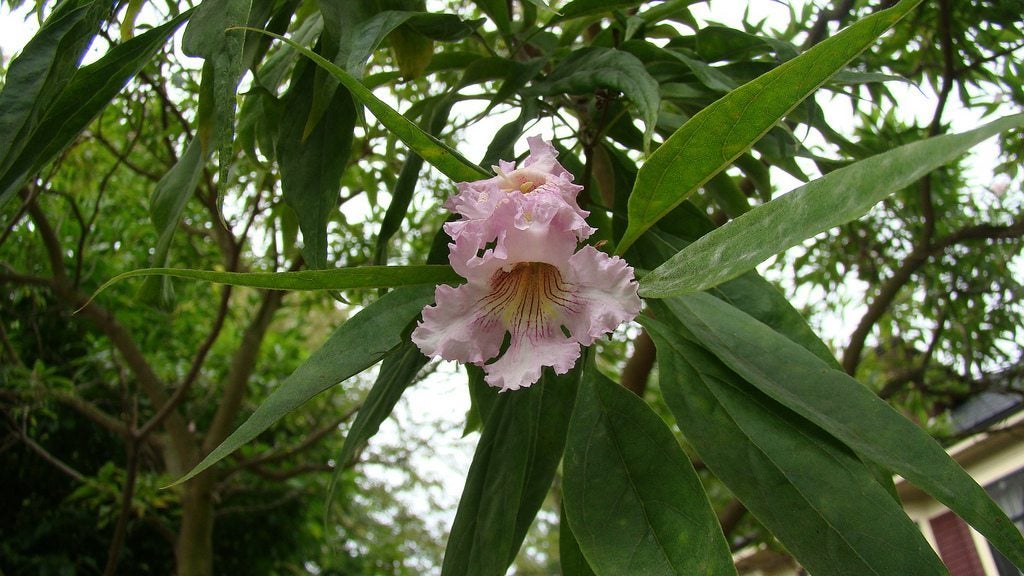Chitalpa Information – How To Grow Chitalpa Trees In The Garden


Chitalpa trees are airy hybrids. They result from a cross between two American natives, southern catalpa and desert willow. Chitalpa plants grow into short trees or large shrubs that produce festive pink flowers throughout the growing season. For more chitalpa information including tips on how to grow chitalpa, read on.
Chitalpa Information
Chitalpa trees (x Chitalpa tashkentensis) can grow into 30 foot tall trees (9 m.) or as large, multi-stemmed shrubs. They are deciduous and lose leaves in winter. Their leaves are elliptical, and in terms of shape, they are about at the halfway point between the narrow leaves of desert willow and the heart-shaped foliage of catalpa. The pink chitalpa flowers look like catalpa blossoms but smaller. They are trumpet shaped and grow in erect clusters. The flowers appear in spring and summer in various shades of pink. According to chitalpa information, these trees are quite drought tolerant. This is not surprising considering that its native habitat is the desert lands of Texas, California, and Mexico. Chitalpa trees can live 150 years.
How to Grow Chitalpa
If you want to know how to grow chitalpa, first consider hardiness zones. Chitalpa trees thrive in U.S. Department of Agriculture plant hardiness zones 6 through 9. For best results, start growing chitalpa in a full sun location in soil with excellent drainage. These plants tolerate some shade, but they develop foliage diseases that make the plant unattractive. However, their trunks are very sensitive to sunscald, so they should never be sited with a western exposure where reflected radiation will burn them badly. You will also find that the trees are tolerant of high alkaline soils.
Chitalpa Tree Care
Although chitalpas are drought tolerant, they grow best with occasional water. Those growing chitalpas should consider irrigation during the dry season a part of the tree’s care. Consider pruning an essential part of chitalpa tree care too. You’ll want to carefully thin and head back lateral branches. This will increase the density of the canopy and make the tree more attractive.
Sign up for the Gardening Know How newsletter today and receive a free copy of our e-book "How to Grow Delicious Tomatoes".

Teo Spengler is a master gardener and a docent at the San Francisco Botanical Garden, where she hosts public tours. She has studied horticulture and written about nature, trees, plants, and gardening for more than two decades, following a career as an attorney and legal writer. Her extended family includes some 30 houseplants and hundreds of outdoor plants, including 250 trees, which are her main passion. Spengler currently splits her life between San Francisco and the French Basque Country, though she was raised in Alaska, giving her experience of gardening in a range of climates.